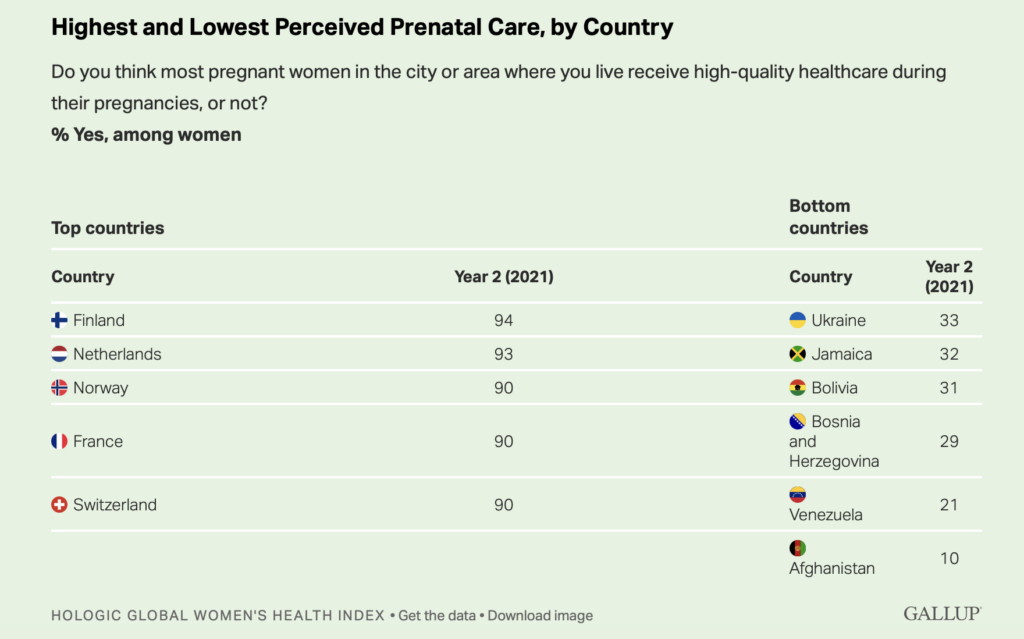The following is from Gallup News.
Although maternal mortality rates are down sharply from where they were 20 years ago, a recent United Nations report shows the world’s progress toward reaching the UN’s sustainable development goal of reducing maternal mortality has stalled.
Further, there is evidence that rates may be heading in the wrong direction.
In 2020, the global maternal mortality ratio was 152 deaths per 100,000 live births, up from 151 deaths per 100,000 live births the year before.
Results from the Year 2 Hologic Global Women’s Health Index, conducted in 2021, suggest that many women also see the care where they live beginning to slip when it comes to providing pregnant women with high-quality prenatal healthcare.
The majority of women surveyed in Year 2 (65%) said they think most pregnant women in their city or area receive high-quality healthcare during their pregnancies, down slightly from the 69% who said so in Year 1 (conducted in 2020).
The Year 3 report, which will be available in 2023, will provide further insights into whether this decline continued in 2022.
While maternal mortality rates are much higher in low-income economies than high-income economies — illustrating the prioritization, resourcing and funding challenges behind the problem — women in all country income groups were less likely in Year 2 than Year 1 to believe pregnant women in their area receive high-quality prenatal care.
On average, 81% of women in high-income economies believe they have access to high-quality prenatal care, down three percentage points from Year 1 — as do 50% of women in low-income economies, down nine points from Year 1, which qualifies as a significant change.
The Best and Worst Countries and Territories for Perceived Quality Prenatal Healthcare
Women in Northern European countries such as Finland and Norway and countries in Western and Central Europe such as France, the Netherlands and Switzerland were the most likely in the world to believe most pregnant women in their communities get high-quality care, with at least 90% of women reporting this.
These countries with the highest perceptions of prenatal care among women have low maternal mortality rates, high GDP per capita and large investments in the health of their population, as demonstrated by their high health expenditures per capita.
Meanwhile, the countries with the lowest perceptions of quality prenatal care among women include low-income to upper-middle-income countries situated all along the spectrum of maternal mortality rates.

From Year 1 to Year 2, perceptions of the quality of prenatal care dropped most among women in high-income (Hong Kong, Hungary, Lithuania and Uruguay) and upper-middle-income (Serbia, Romania, Georgia and Jamaica) economies.
Real-world conditions at the time could have contributed to these declines. For example, the measures taken to curtail the spread of the Covid-19 pandemic severely disrupted healthcare systems around the world. Many countries had to restrict access to care and treatment, which directly affected people’s healthcare experiences, including those of pregnant women. (Continued…)
Link to article here.








